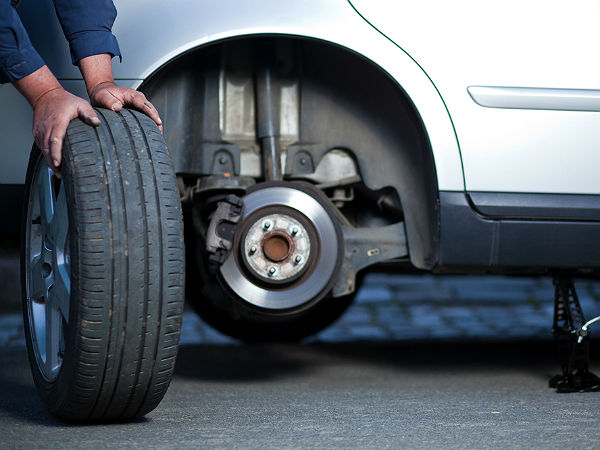
6 Common Tire Myths Debunked
Tires are arguably the most important component on your vehicle. They are, however, among the least understood features. Allow me to list and pop a few common misconceptions about tires.
1. The tire-pressure monitoring system (TPMS) in my new car makes sure my tires are adequately inflated.
The truth: TPMS isn’t required to issue a warning until pressure is 25 percent below the vehicle manufacturer’s recommendation. That’s “well below the pressure required for safe driving,” according to AAA and “barely adequate to carry the vehicle’s maximum load,” says the Rubber Manufacturers’ Association. TPMS is intended as a last-minute warning before imminent tire failure, not as a monitor to make sure your tires are properly inflated.
Buy a quality tire gauge and set your tire pressure to at least the vehicle manufacturer’s recommendation, which is found on the driver’s door jamb. I’d rather you set your tires 3 or even 5 psi high rather than 1 low. Tire-pressure gauges can be inaccurate, and tires leak as much as 1 psi per month. Higher pressure improves hydroplaning resistance and, if you’re like many folks, you may not bother to check your tires again for six months.
2. When replacing only two tires, the new ones go on the front.
The truth: Rear tires provide stability, and without stability, steering or braking on a wet or even damp surface might cause a spin. If you have new tires up front, they will easily disperse water while the half-worn rears will go surfing: The water will literally lift the worn rear tires off the road. If you’re in a slight corner or on a crowned road, the car will spin out so fast you won’t be able to say, “Oh, fudge!”
There is no “even if” to this one. Whether you own a front-, rear- or all-wheel-drive car, truck, or SUV, the tires with the most tread go on the rear.
Read: Why You Should Not Buy a New Car
3. A tire is in danger of bursting if pressure exceeds the “max press” number on the sidewall.
The truth: The “max press” number has nothing to do with a tire’s burst pressure. The “max press” and “max load” numbers indicate the pressure at which the tire will carry the maximum amount of weight. A new, quality tire will not pop at an even multiple of the “max press.” I’m sworn to secrecy about the exact burst pressure, but I wouldn’t hesitate to double the “max press” of any new passenger-vehicle tire on a new wheel. But hitting a big pothole at super-high pressures may cause a failure.
4. The “max press” is where the tire offers its maximum cornering grip.
The truth: If you didn’t read the previous point, do so now. Many law enforcement officers cling rigidly to the misconception that the “max press” is secret code for maximum at-the-limit traction. It’s a coincidence that many low-bidder tires offer increased grip at 40 or more psi. But that’s all it is: a coincidence. If I were going to race a stock ex-cop Ford Crown Victoria on street tires on a road-racing circuit, 45 psi front, 35 psi rear wouldn’t be a bad place to start. (The tail would be, in Nascar lingo, too loose for safe street driving.)
Read: Tips on how to maintain your car and keep them running on the road
5. Low-profile tires fitted on large-diameter wheels improve handling.
The truth: The short sidewalls of low-profile tires enhance the tires’ response when the driver first turns the steering wheel. That gives the driver the (often false) feeling the tire has tons of grip. But after that initial movement, it’s the tread compound—the stickiness of the rubber—that determines how well the tire grips the road. Also, the combination of a large-diameter wheel and low-profile tire is usually heavier than the original equipment. This means the suspension may not be able to keep the tire in touch with the pavement.
6. All tires with the same designation are exactly the same size.
The truth: Think all 225/35R19s (or whatever tire size) are exactly 225 millimeters wide and their sidewalls are exactly 35 percent as tall as the tire is wide? Not exactly. And unlike what’s commonly believe, these designations are not about production tolerances.
All the tires of a specific part number or stock keeping unit (SKU) can be can be slightly wider or narrower than the nominal width and their profile can be slightly taller or shorter than the stated percentage. Why? A wider, taller tire puts more rubber on the ground, which is good for a performance tire. A shorter, narrower tire uses less material, thus reducing costs in a business where profit margins almost never break into double digits. So tiremakers might scrimp a bit here and there. It’s a bit like how a 2 x 4 is not, in fact, 2 by 4.
